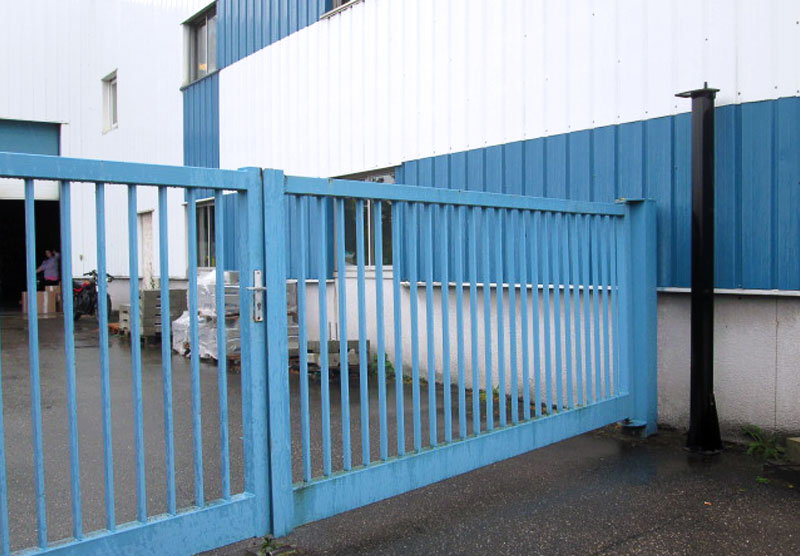Infrared Barrier without Civil Engineering for Gates
APPLICATION : Using PORTALIS as a G-FENCE system accessory for gates
INNOVATION : Solar powered solution
HIGH PERFORMANCE : Beams multiplexed through optical synchronization
Overview
PORTALIS is an infrared solar-powered barrier that is connected to a G-FENCE system to provide perimeter intrusion detection on gates. G-WALL creates an invisible/virtual wall of detection with five dual-beam cells at a height of 8 ft. (2.5 m) or 10 ft. (3 m) depending on the gate being protected.
Beams are multiplexed through optical synchronization and can be set-up in single or dual detection mode with adjustable heights.
PORTALIS has four alarm information modes: intrusion, anti-climbing cap, tamper, disqualification (technical alarm). Alarm information is relayed through polarized contacts to the auxiliary inputs of a nearby G-FENCE Control Unit.
| Maximum range outdoors | 30 m |
| Height and type of towers | 2,5 m single face - 3 m single face |
| Tower references | Ref. 30624010 - Ref. 30624110 |
| Infrared beams | 10 (five dual-beam cells) |
| Lightning strike protector and anti-climbing cap | Integrated |
| Alarm outputs | - RL1 : Intrusion / anti-climbing cap (Rx and Tx) - RL2: Disqualification / tamper(Rx) |
| Power supply | Solar panel and battery in each tower |
| Operating temperature | -40°F to +158°F (-35°C to +70°C) |
| Electromagnetic compatibility | Compliant with European standards (CE label) |
To use the barriers correctly, it is important to ensure that the barrier is not installed on an unstable support (e.g. badly sealed pole, etc.). Before installing an infrared barrier, check that the ground is quite level and will guarantee the stability of the towers with time. A maximum of 10° elevation may be tolerated between the towers. In case of elevation above 10°, contact SORHEA’s sales department.
Check that no vegetation can block the beams, no matter the season and weather condition (wind).
It is also important to check the cleanliness of the covers: it is important to clean them with a soft and damp cloth at least once a year.
Infrared technology operates at a wavelength above that of visible light (950nm), which makes the IR beam invisible to the naked eye.
IR beams are transmitted and received by infrared cells – transmitter cells generate and send a pulsed beam to the receiver cells which capture infrared pulses and turn them into electrical signals. When an absence, loss or change in the signal occurs (loss of 95% of the transmitted signal), an intrusion alarm is triggered. To prevent interference of receiver cells by the infrared beams being transmitted, cells are multiplexed.
Multiplexing is a principal whereby infrared pulses are transmitted in a synchronized manner by an optical or wired link between transmitter and receiver towers. This feature optimizes cell alignment (“alignment feedback”). All the PROTECH IR barriers are multiplexed.




